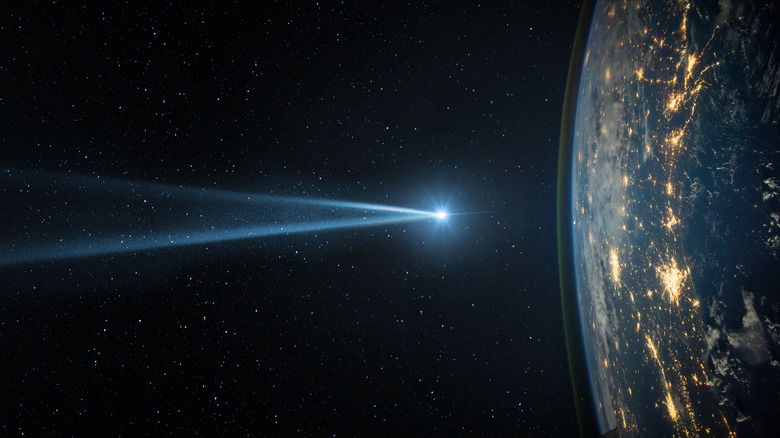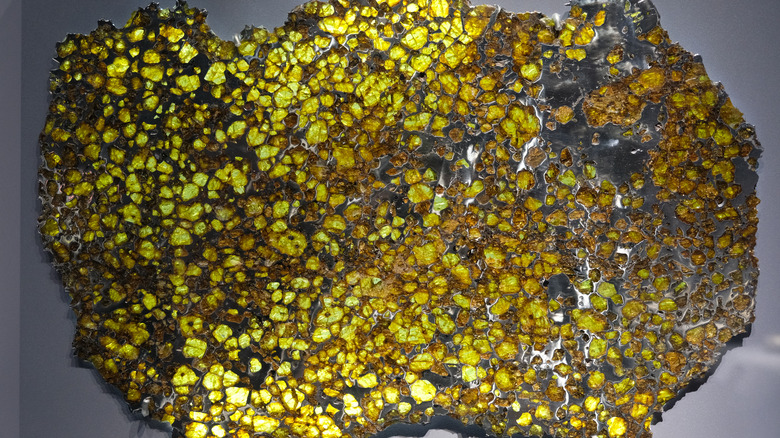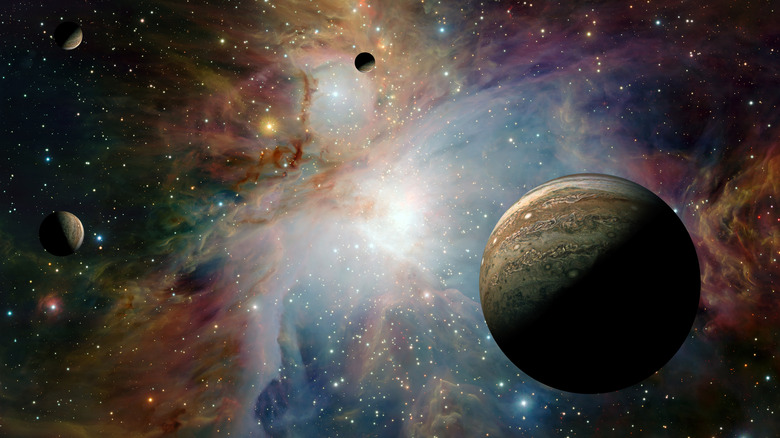This 4.5 Billion Year-Old Discovery In The Gobi Desert May Have Predated The Earth Itself
In 2000, a hiker in China came across an interesting find in the Gobi Desert: a large, 1,003-kilogram rock that scintillated like a church window. It proved useful as an eating spot for the anonymous traveler. Over time, the person became interested in the origins of the shimmering rock, so they took a 20-kilogram sample of it and sent it to a university in Tuscan, Arizona. They informed him that it was not just an ordinary rock, but a 4.5-billion-year-old meteorite that had plummeted to the Xinjiang region of China. The meteorite, named Fukang after the city it landed near, ended up on display at the Gem and Mineral Show in Tucson in 2005 (via Science 101).
The extraordinary find is also no ordinary meteorite, but rather it belongs to the type known as Pallasites — a group of meteorites that makes up less than one percent of all meteorites found on planet Earth (via The Register). The rarity of this type has made the space rock an interesting scientific find as well as a highly valuable commodity in the market of geological materials. The largest portion of it ran as high as 2 million GBP ($2.1 million), though it remains unsold, and smaller bits have sold for 232 GBP ($32 USD), according to The Daily Mail.
What is the Fukang Meteorite?
A meteorite is a meteor that doesn't burn up in Earth's atmosphere upon entry and makes a landing. These space rocks can be chunks from an asteroid, moon, or planet. Although this phenomenon is not uncommon, a Pallasite meteorite is a rare composite that contains nearly equal parts of nickel-iron alloys and olivine. Its appearance resembles a mosaic of dark greens and yellows. The aesthetics come from the taenite bands (metallic) and olivine (a rich green), and in the sunlight it shimmers with a color palate that looks almost like a piece of art.
This isn't the first Pallasite meteorite found on Earth, however, as they were first discovered by its namesake, Simon Peter Pallas. Pallas was a German doctor who studied a 700-kilogram meteorite from Russia in 1772. From studying its composition scientists learned that Pallasites likely originated from a planet's mantle or else a large asteroid capable of having a mantle and core — something known as a "differentiated asteroid" (via Science 101). The presence of olivine helped hint at the Pallasite's planetary roots, as it is a rock-forming mineral that's prominent in the upper mantle of rocky planets, including Earth (via Britannica).
What is Known About Its Origins?
Given the age of the Fukang meteorite, it is likely that it was formed around the same time as our solar system (via Science 101). According to Space.com, the planets formed out of the space debris that wasn't incorporated into the early sun. The gas giants, like Jupiter and Neptune, formed first and with their significant gravity they flung debris toward the sun or out of the solar system altogether. This gravitational chaos of the early solar system caused much debris flying in many locations and proto planets not making it to full formation. The Fukang meteorite may have broken off from one of these failed planets before Earth even formed.
This would make sense, since the Fukang meteorite, along with other Pallasites, are believed to have come about from the collisional forces that would have been at work in the early solar system. Indeed, the impact would have needed to be monumental enough to affect the upper mantle of a proto planet. Over time, the hot liquid of the olivine and metals cooled and ultimately became the ornamental meteorites that today so rarely make it through Earth's atmosphere (via Space Gems).


